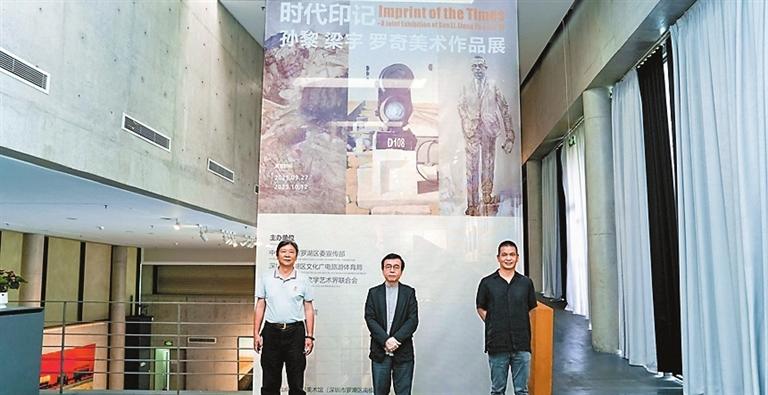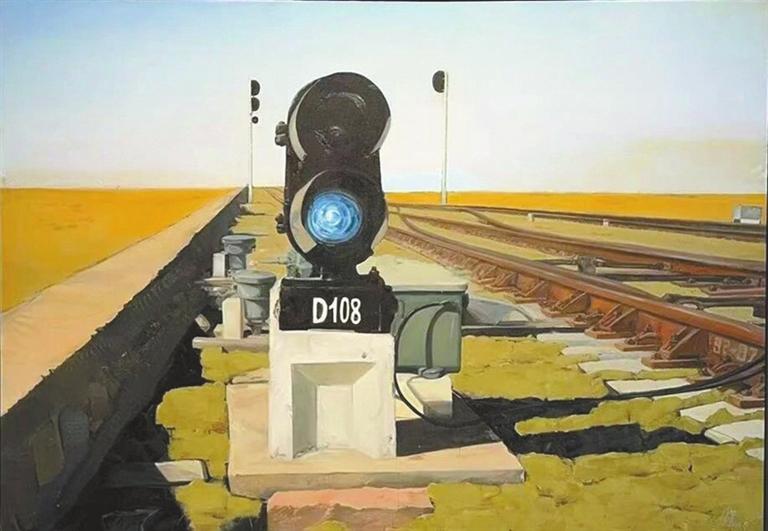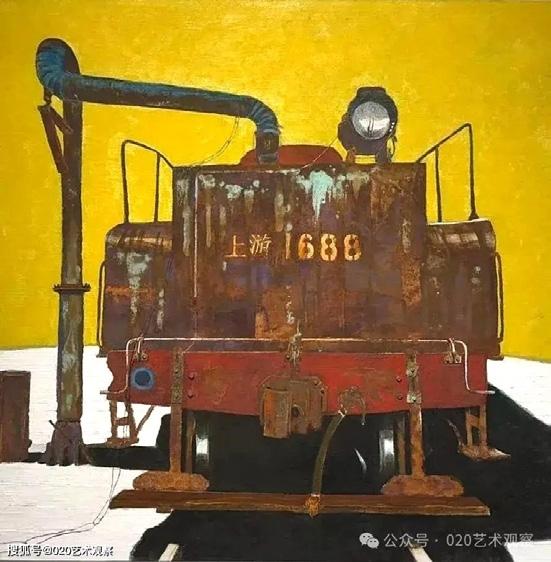


As part of the “Imprint of the Times” exhibition now on view at Shenzhen’s Luohu Art Museum, renowned artist Liang Yu from Heilongjiang is presenting a series of evocative works exploring memory, movement, and transformation. In the following review, Bulgarian printmaker Dr. Veliko Marinchevski delves into the layered symbolism and philosophical vision behind Liang’s powerful visual language.
Veliko Marinchevski LIANG YU’S works offer not only visual pleasure but also profound philosophical contemplation. They serve as symbols of the journey, change, memory, and the future, where each detail is part of the larger whole of human existence. Liang’s paintings are rich in multilayered symbolism, offering fertile ground for philosophical exploration. Railway transport, with its strictly defined trajectory, becomes a powerful metaphor for the journey through life, the constancy of time, and humanity’s aspirations for the future. Tracks and trains, monuments to the past, stand as symbols of both the path of life and the poetic inevitability of movement and change. The corrosion of the train carriages serves as a conduit for the memory of time. Every part bears traces of history — trains as witnesses to events and as parts of life that have already passed through their active existence and left behind only memories and physical remnants. In this context, when Liang’s paintings refer to freight trains, tankers, baggage cars, and locomotives, the symbolism expands and incorporates new layers. Freight trains, with their industrial significance, shift the focus from the personal journey to collective efforts, transitions in economic and technological stages, the burden of existence, and social structures. The train evolves into a metaphor for the laden passage of time, the inevitability of change, and the historical transformations of society. These are not mere representations of industrial machinery — they are allegories of life’s journey, the transformations we undergo, and the constant movement of time and space. The paintings reflect the philosophy that the journey is not only physical but also metaphysical — that every movement along the tracks leads to inner evolution and the awareness that what we find is not at the end of the journey, but within the journey itself. In these works, the objects are situated within a low horizon, creating a striking contrast in color and scale. This contrast is between the industrial reality of the train and traffic lights and the monochromatic calmness of the vast space. The effect is akin to strange, unreal landscapes — a surreal transformation. They speak to the collision between human civilization and nature, as well as time as the unifying force that transcends both. Liang masterfully employs a broad range of complex and rich tones, enhancing the impact with strong contrasts of bright and dark hues, light and shadow. Simultaneously, he introduces a series of nuanced explorations, skillfully combining complex shades of gray in the lower-contrast register, creating a shimmering atmosphere and a mystical space. The artist’s graphic and printmaking culture is evident in his paintings. The masterful handling of detail, the vigorous, dense brushstrokes with multilayered texture in the industrial objects, and the sharp plastic contrast in the purity of the flat background tone create a striking visual impact. The contrast between light and shadow evokes a sense of dialectic — just as life moves between extremes of light and darkness, time also passes through periods of timelessness and transience. The paintings trigger a sense of calm that is subtly underpinned by an unspoken tension woven into the fabric of the image. What unites these elements is their functionality in managing flow. The objects — carriages, locomotives, signals, railways — are not merely elements of railway infrastructure but conceptual works, installations in themselves, offering a new understanding of the metaphor of movement and removing any limitations between art and ordinary reality. They evolve into both visual and metaphysical objects that outline the philosophy of time, collectivity, and industrialization. The concept is further developed by including an interactive element in the exhibition. The performance of driving bolts into the rail foundations becomes a kind of act of restoring the “path,” symbolizing not only physical movement but also an emotional and philosophical process — a process of “constructing” meaning. The railway system, with its mechanisms for controlling movement, can be seen as a predetermined path in life — the paths we walk, choices we make, and directions we follow. This highlights the conceptual aspect of the works, where the objects manage the physical flow while offering philosophical reflections on the journey of life. This exhibition is part of that journey. (Dr. Veliko Marinchevski is a Bulgarian printmaker, educator, and critic . He has served as vice president of the International Printmaking Organizations Alliance in China since 2021.) | 
